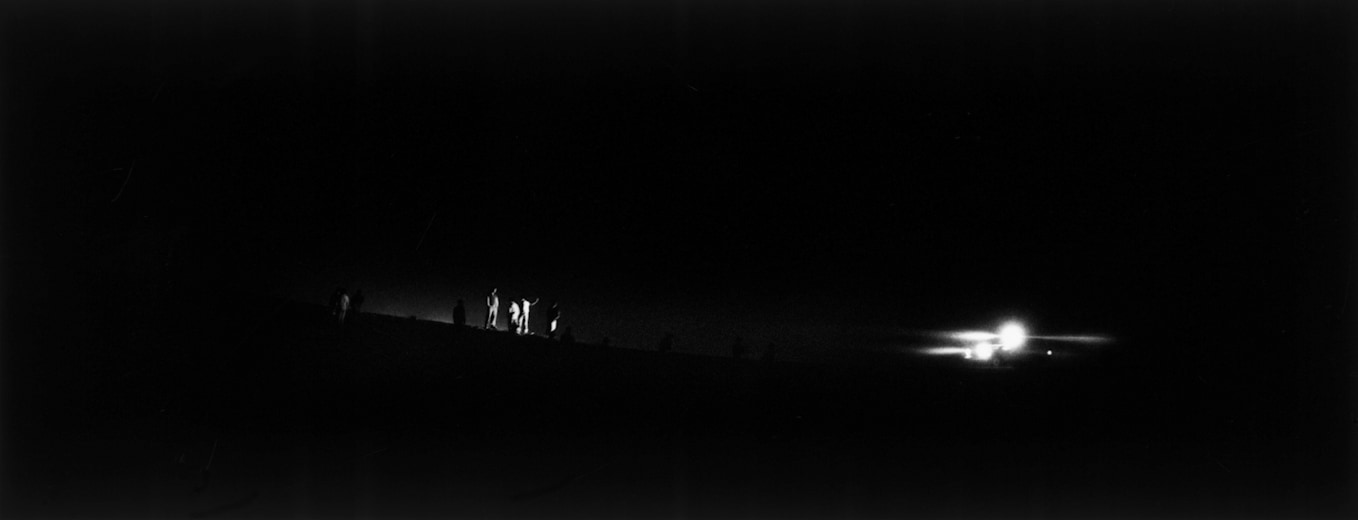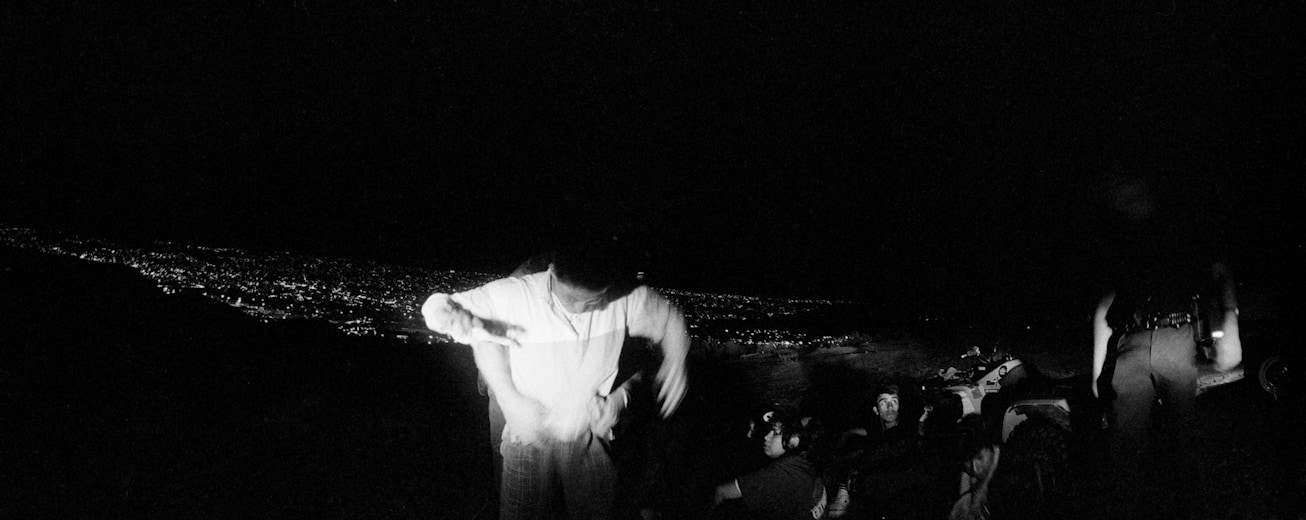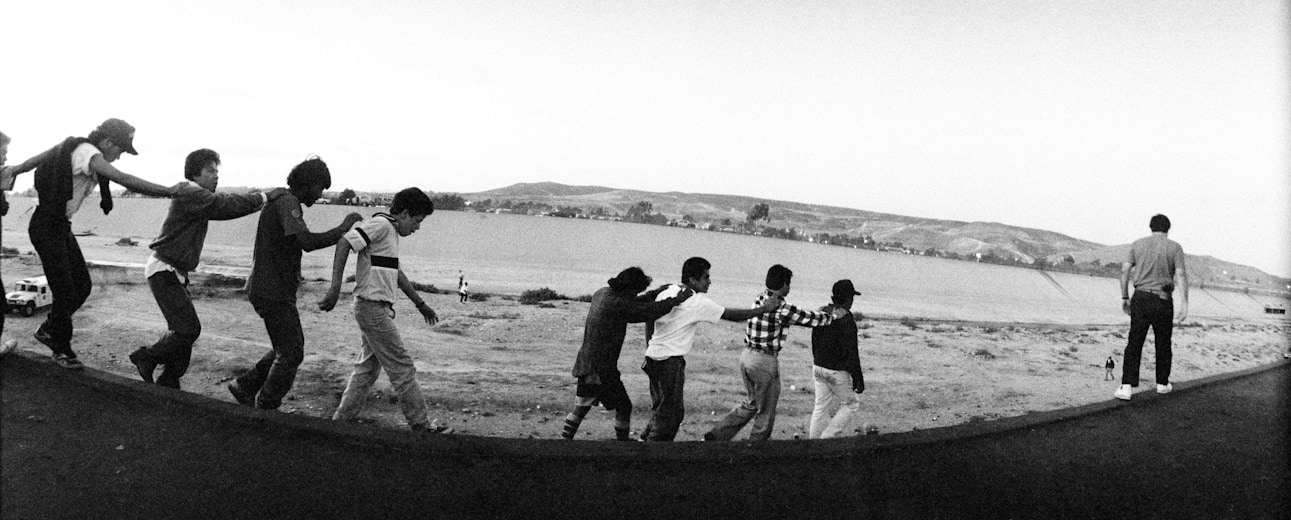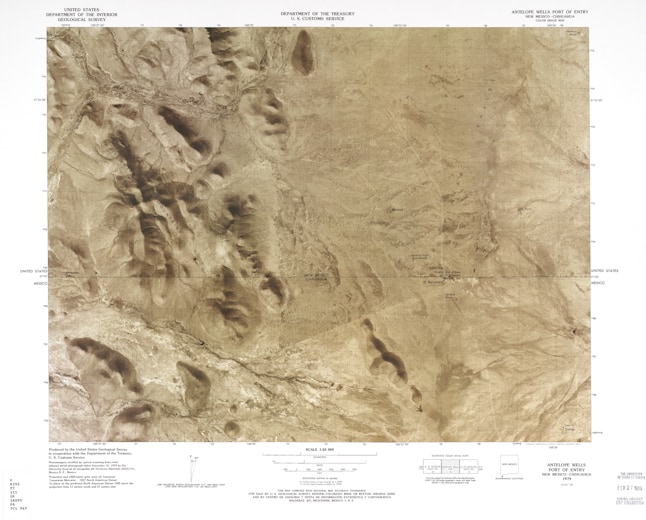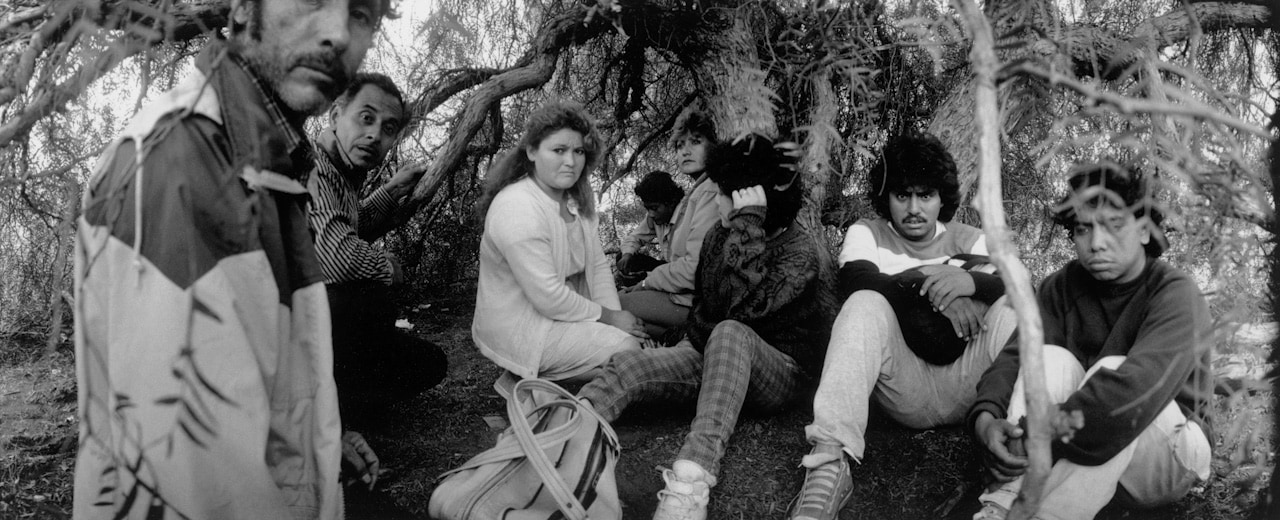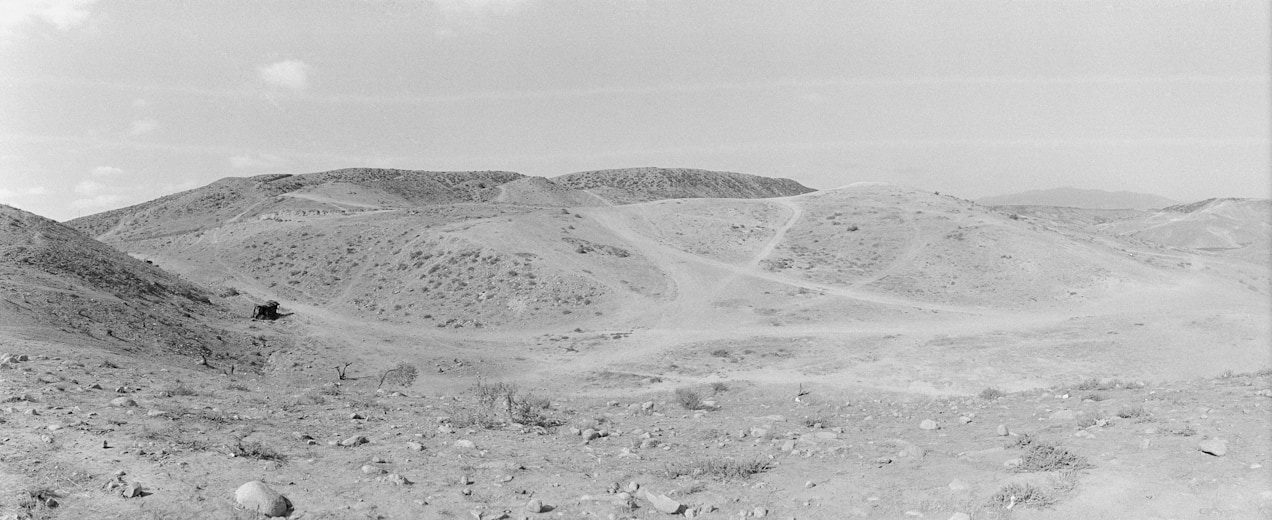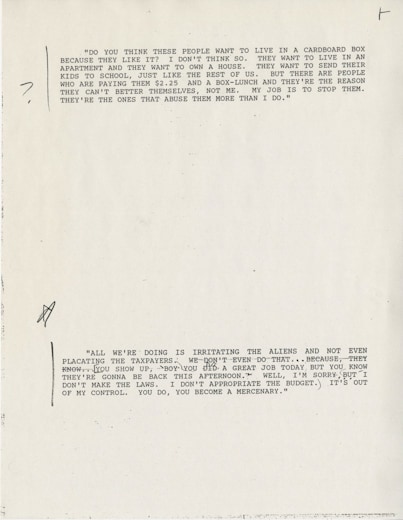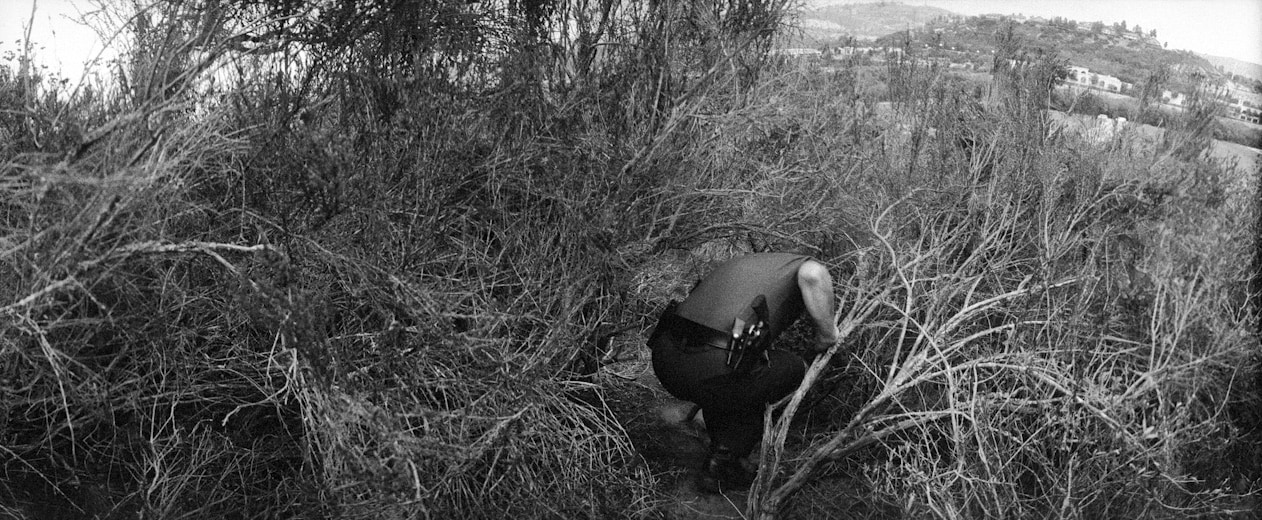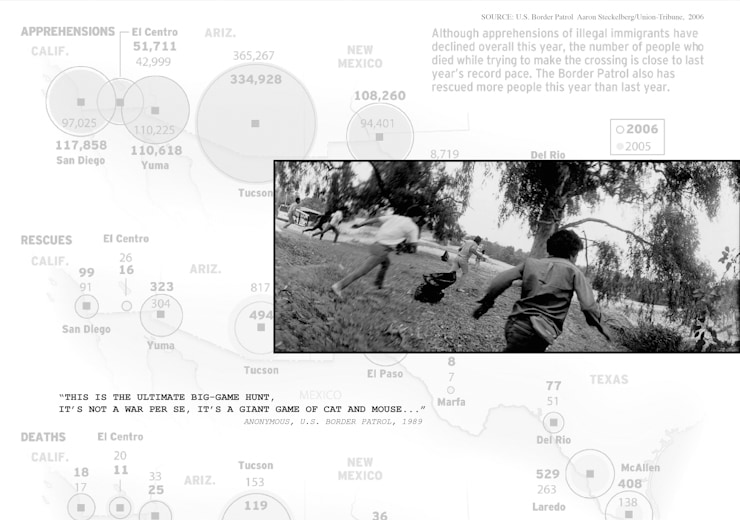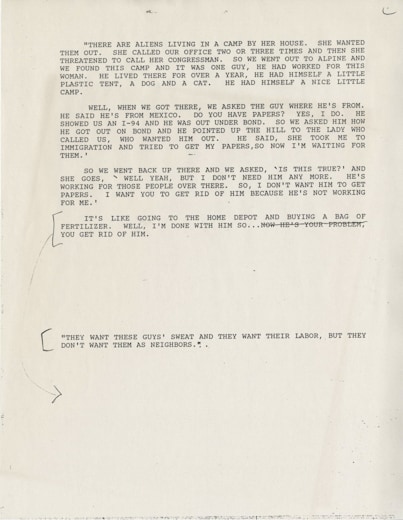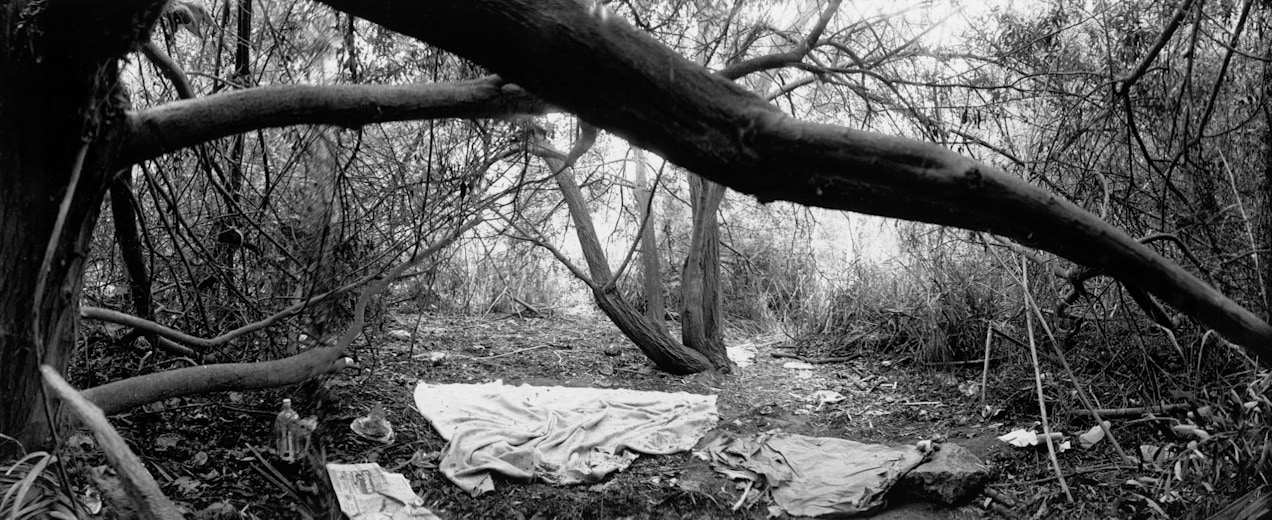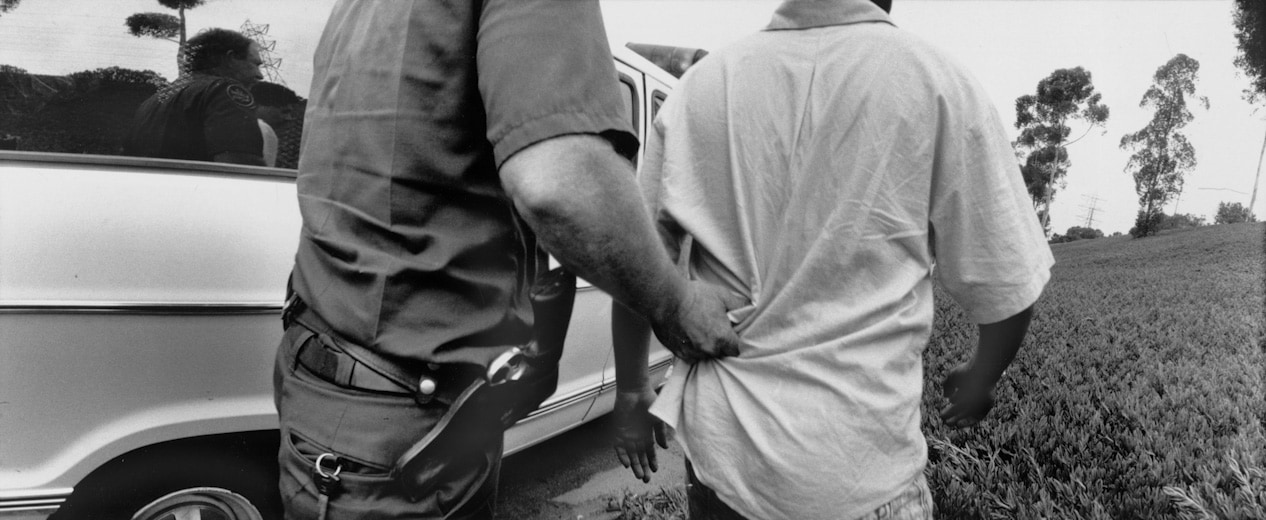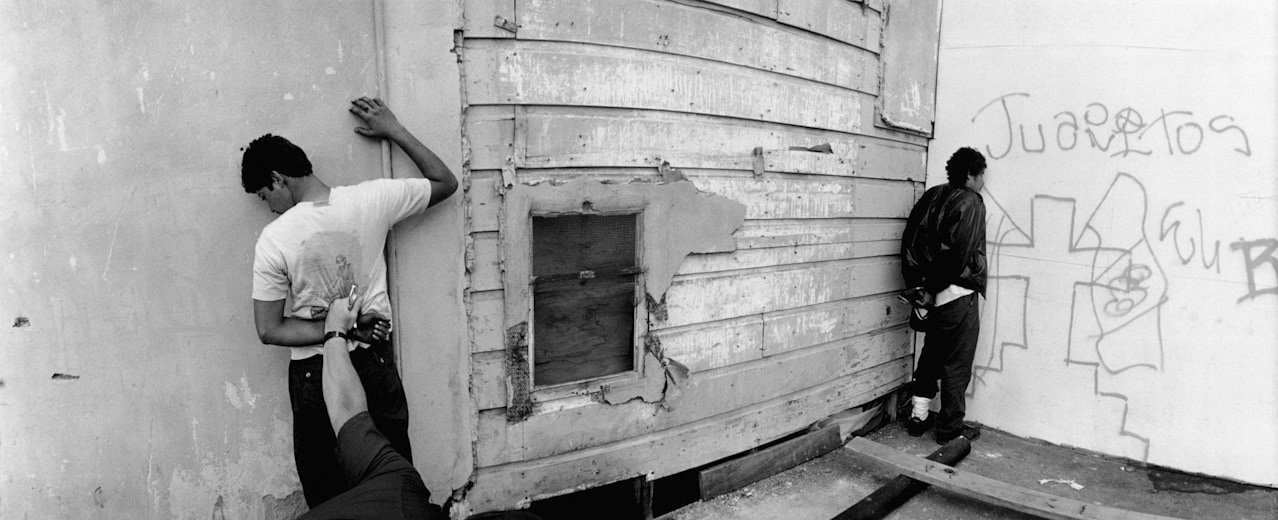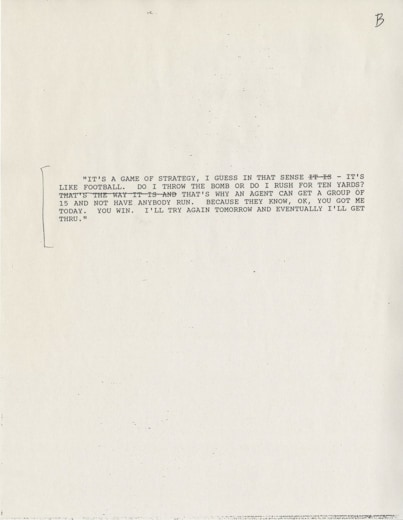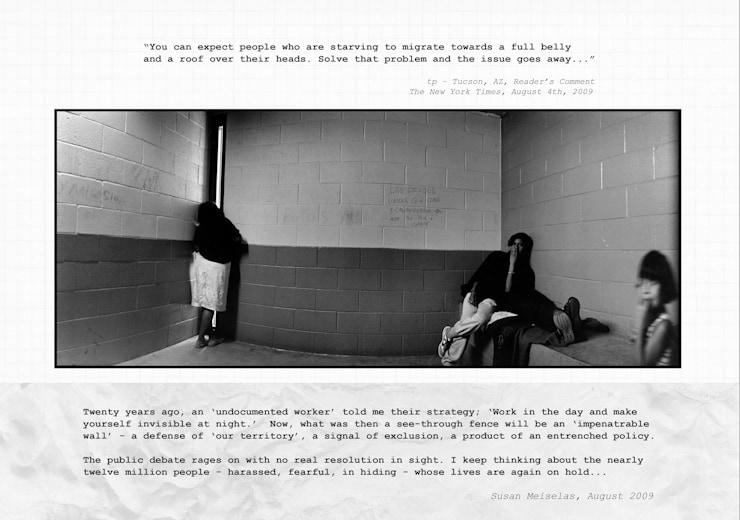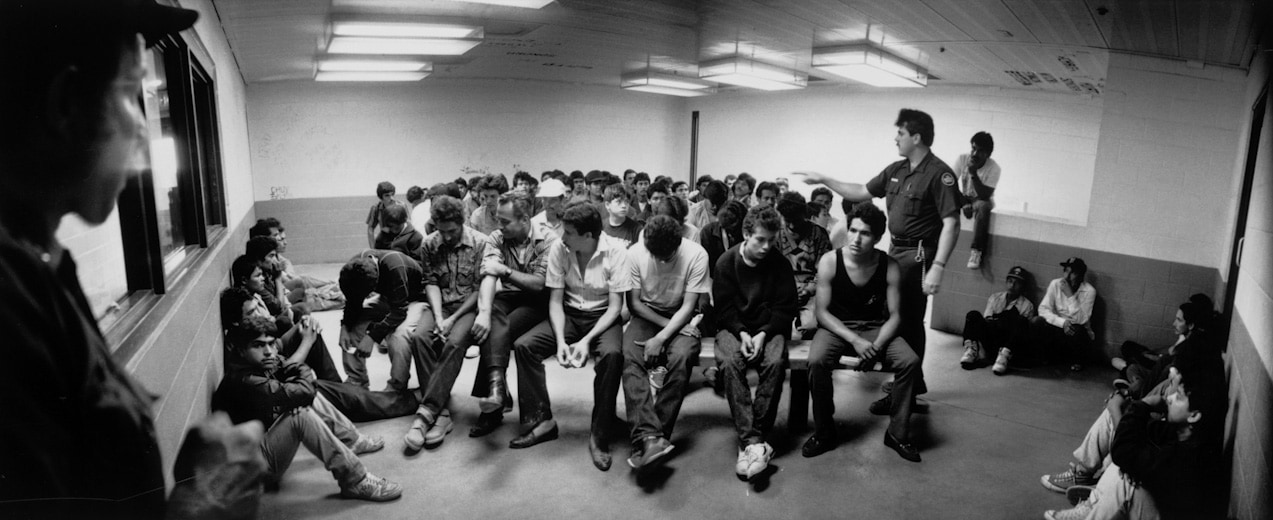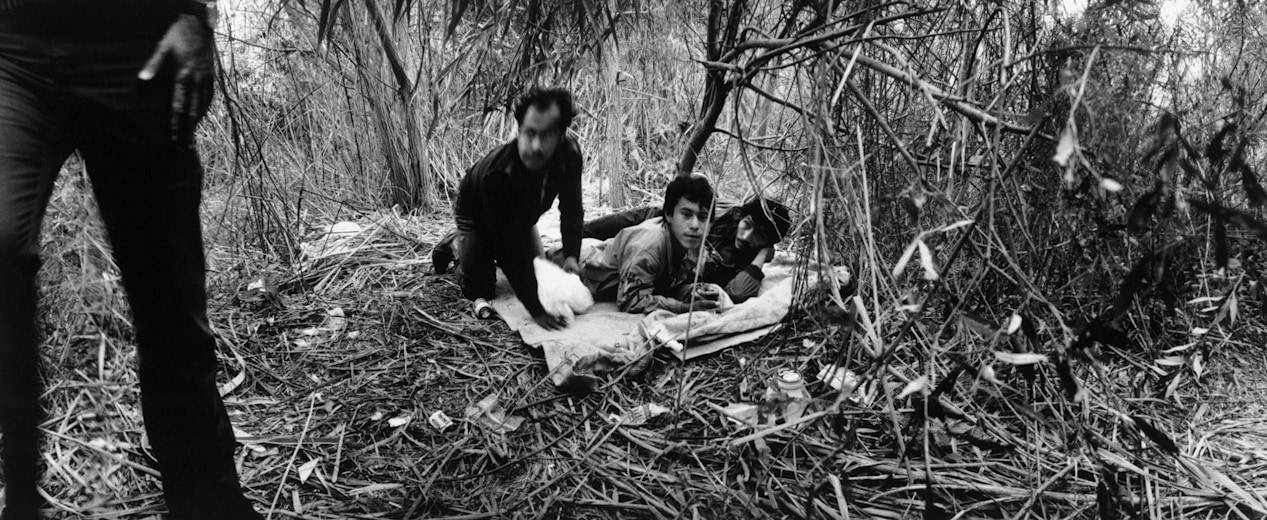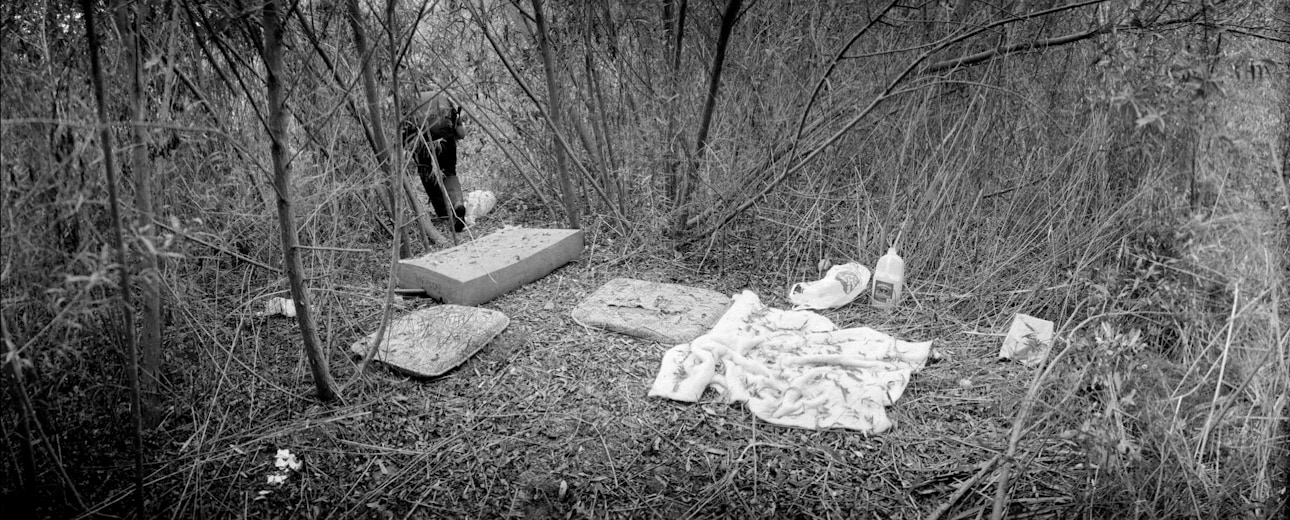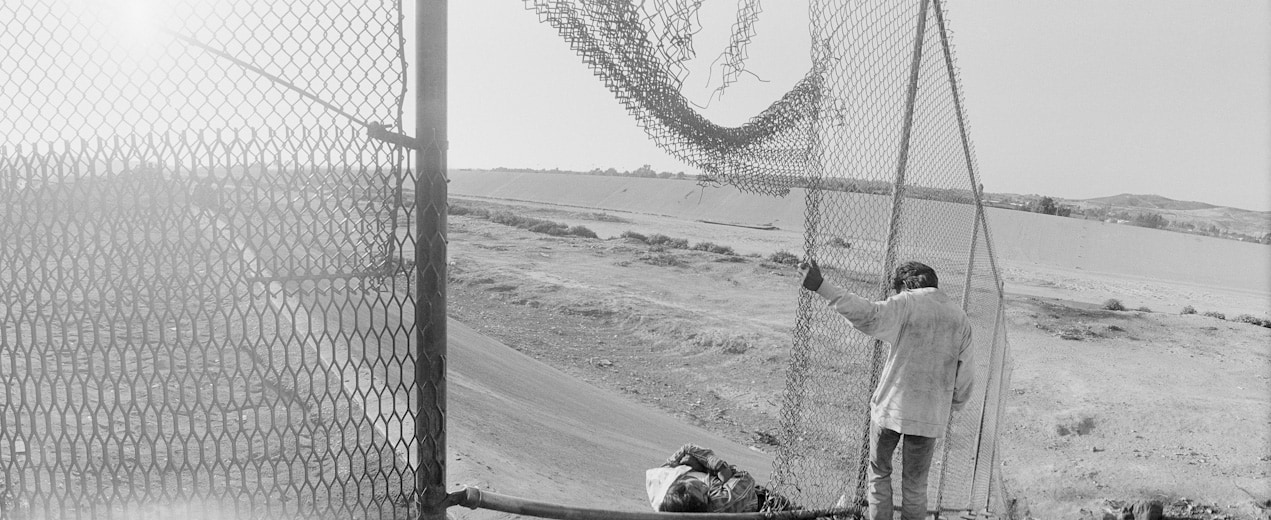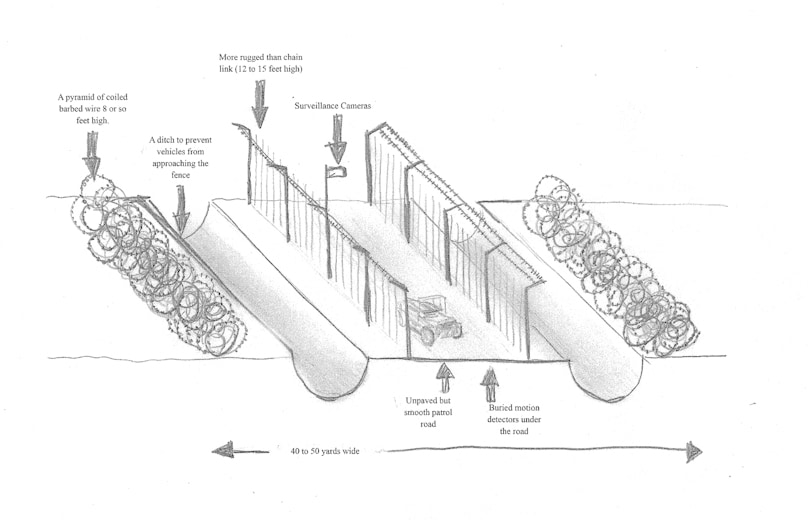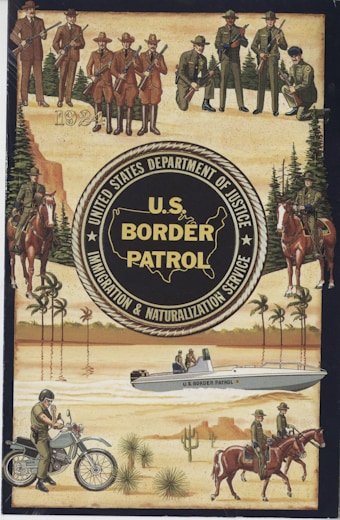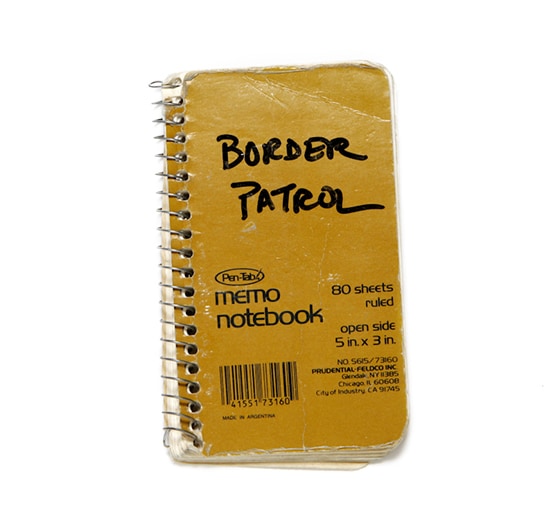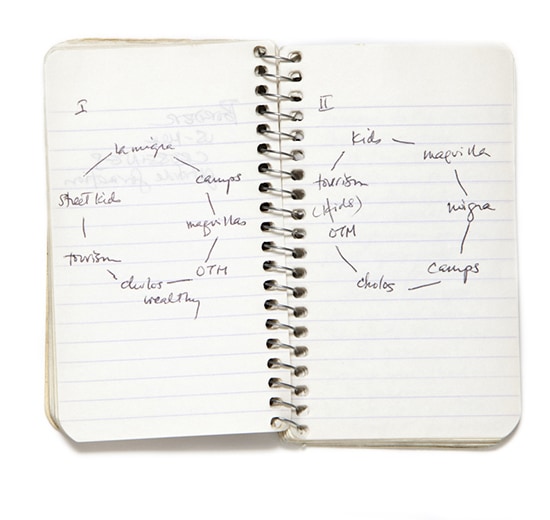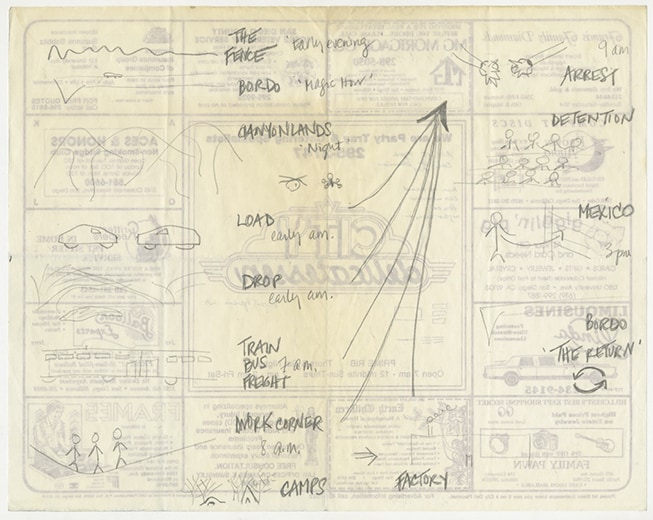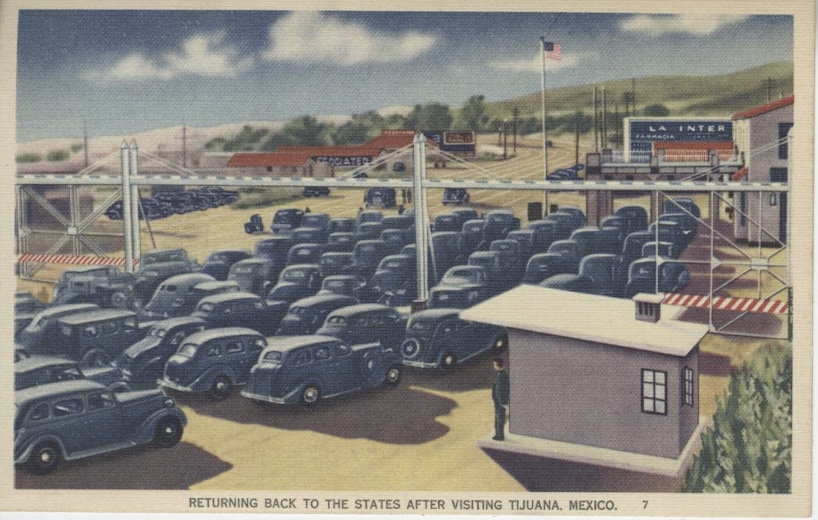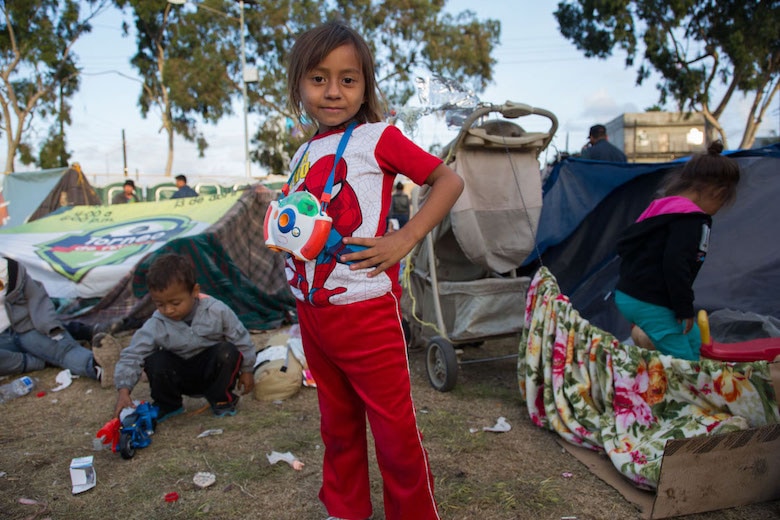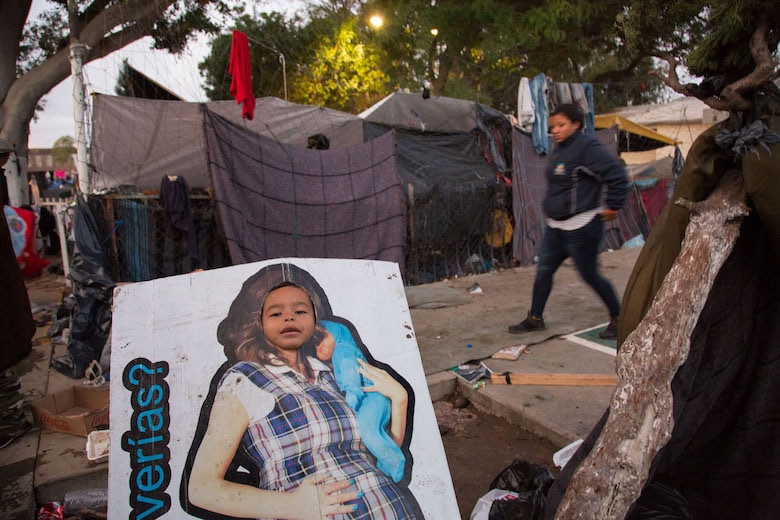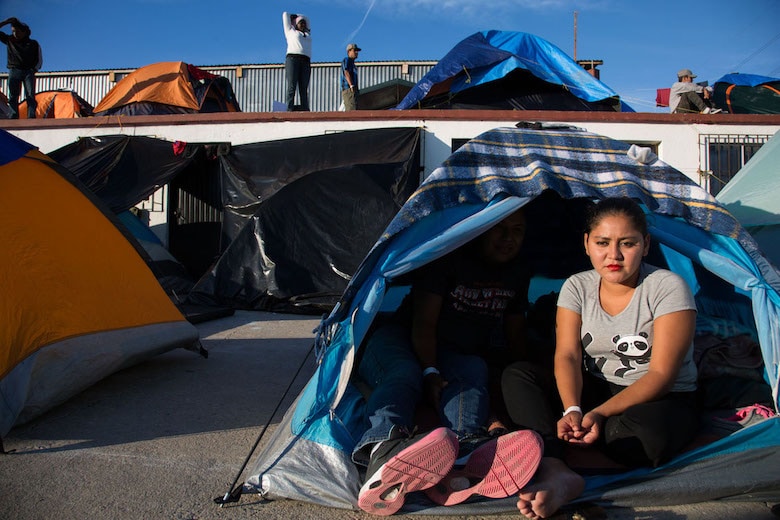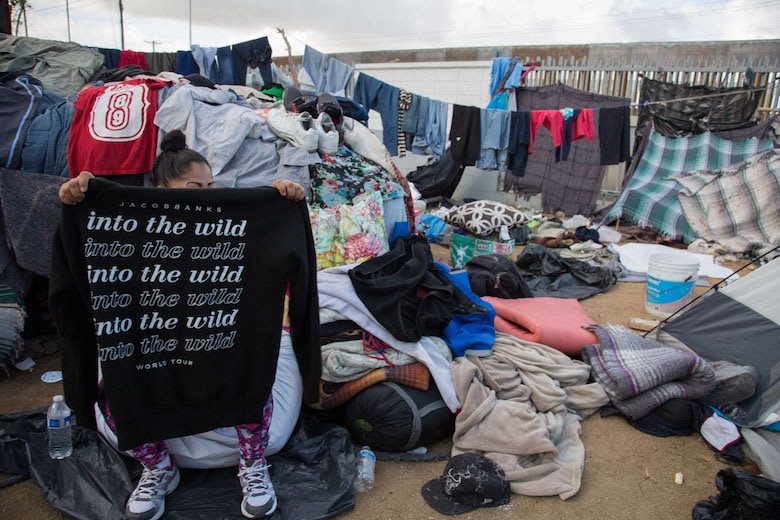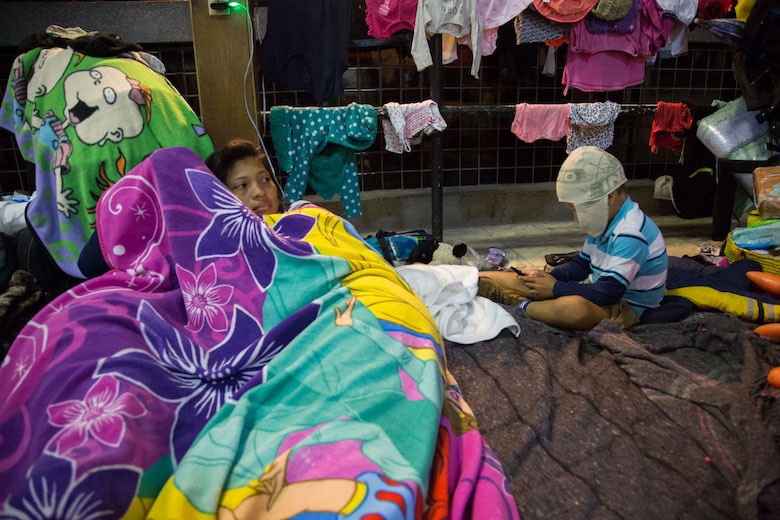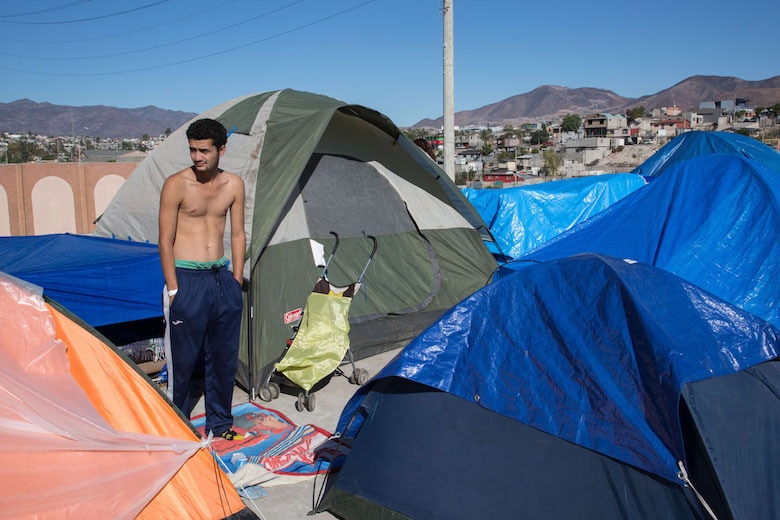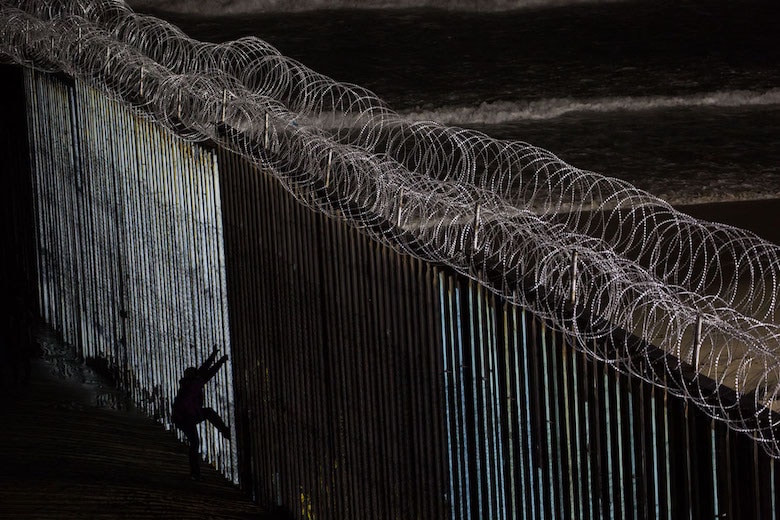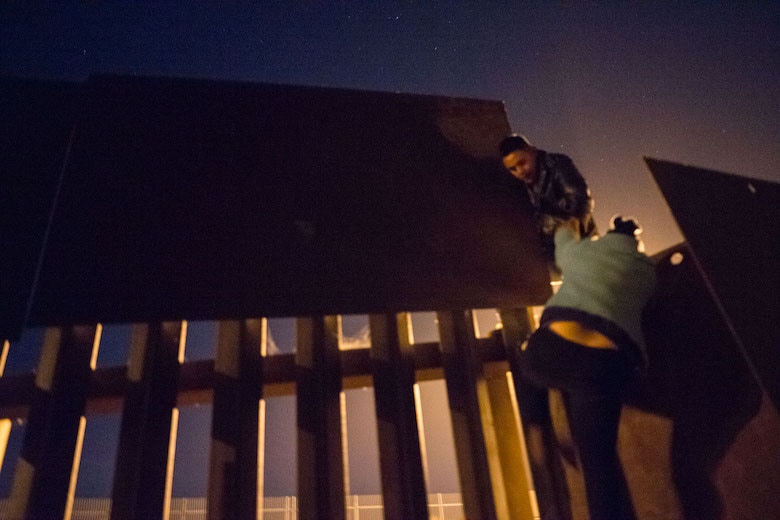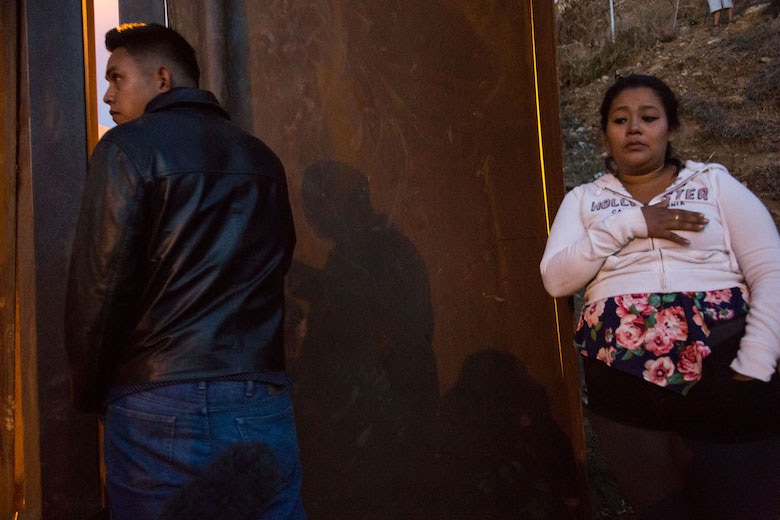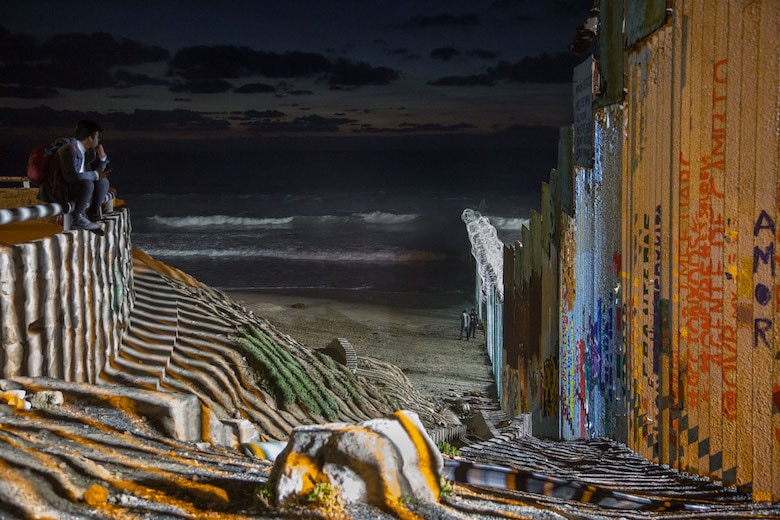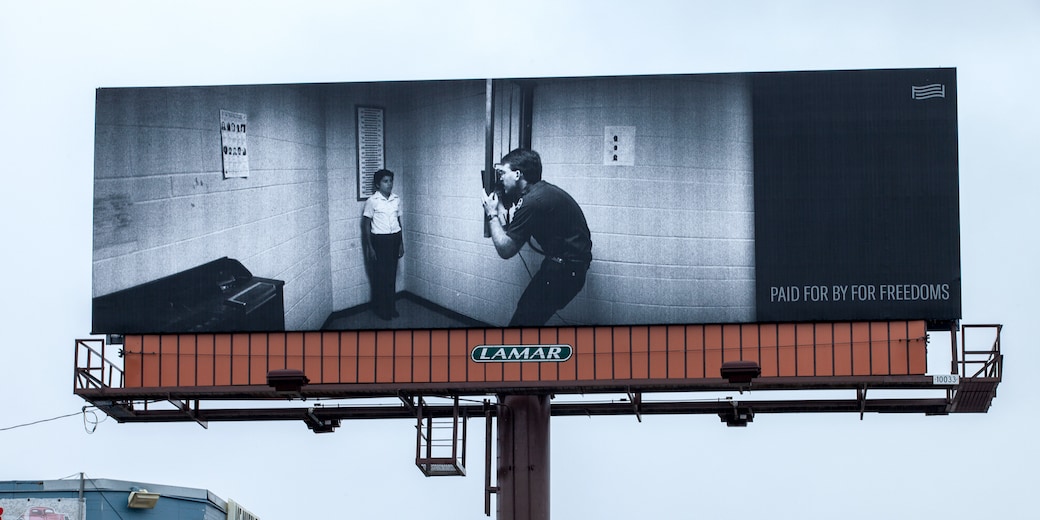United States/Mexico Border
US/Mexico Border, 1989
For those who are crossing, an arrest is a stopping. Paths are temporarily reversed and people are often sent back to the countries and conditions they fled. The migrants say that when rich Americans want gardeners and maids, they allow the 'undocumented workers' to proceed. When they have enough, the rest are scooped up like garbage and disposed of.
For those who remain, we Americans rarely ask who they are or why this is the choice they have made. So we pass the silent faces on the street, in the stores, even in our own homes. We see their eyes, but we don't know what their eyes have seen or what they see in us.
-Introduction for exhibition of "Crossings" at the Art Institute of Chicago, 1990
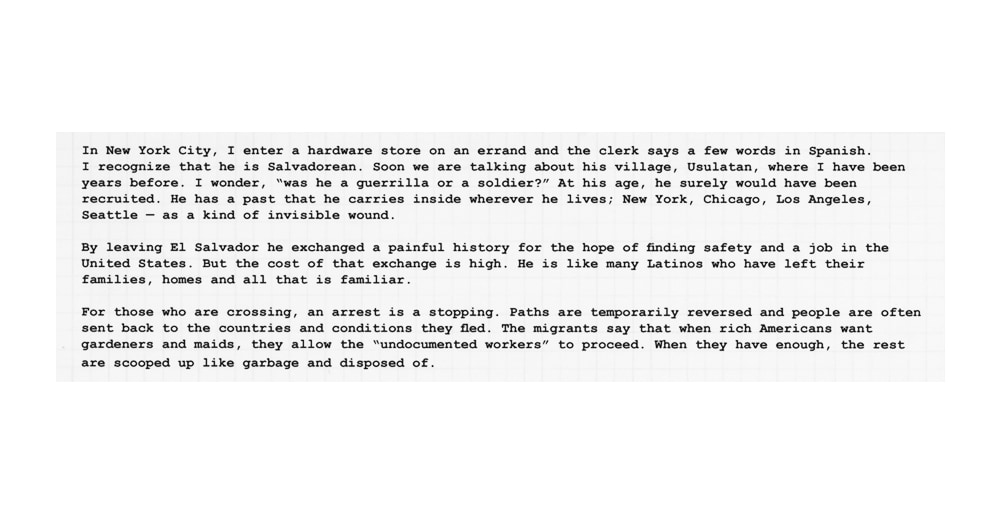
"The American public has no idea, nor do they want to know what the border patrol does because none of these illegal aliens are affecting their jobs yet. They work menial jobs: manual labor, gardening, landscaping, construction, dirty work. What other Americans don't want to do. As soon as we start getting illegal entrants who are qualified...doctors, accountants, lawyers, Indian chiefs...then they're gonna say, 'Hey wait a minute, who's protecting our borders?' " -Anonymous, U.S. Border Patrol, 1989

Americans have been hearing about members of “the migrant caravan” since early October, when a group of around 160 Hondurans gathered in San Pedro Sula, one of the world’s most violent cities, to begin a nearly 3,000-mile journey to Tijuana on foot. Within several days, the caravan had swelled to 1,600 people; Vice President Mike Pence urged them to stay home, or turn back. They kept on, arriving at the border in numbers that eventually reached almost 6,000.
The violence of Homeland Security’s response when faced with uninvited guests exposed a great hypocrisy in America’s foundational myth, which is, of course, about the defiance of borders. It had occurred only a few days after Thanksgiving, a federal United States holiday that claims to celebrate how the migrants who would become the first Americans had been welcomed by the people whose land they had crossed into—without waiting in line, without filling out paperwork. The contrast laid bare just how arbitrary a border really is, that “the border” is a myth itself, in spite of the categories it creates: who is on what side, and what that determines they deserve.
- Bridget Read, "Where the Border Ends, Vogue, December 7, 2018
The current bottleneck at the border in Tijuana (a city that is home to many migrants from past waves of asylum seekers, including thousands of Haitians displaced by hurricanes and earthquakes) is the result of the Trump administration’s limits on asylum applications at the San Ysidro Port of Entry. Officials are only letting between 40 and 100 people cross daily; as recently as six months ago in some cases, migrants who made the same journey would not face a delay. Due to what the Trump administration calls “metering,” officials are now telling asylum applicants to wait for days and sometimes months. It was a process that began with the Obama administration in 2016 that Trump has turned into standard practice.
- Bridget Read, "Where the Border Ends, Vogue, December 7, 2018
The photographs that Susan Meiselas has taken of asylum seekers in Tijuana for Vogue capture an ecosystem rather than an imaginary line. With the help of journalist Sarah Kinosian, Meiselas began a week after Border Patrol deployed tear gas at the San Ysidro Port of Entry and photographed the temporary inhabitants of the Benito Juarez Sports Complex—where migrants were first placed before a combination of flooding and overcrowding made it uninhabitable—and at the next shelter, some 12 miles away in a former concert hall called El Barretal. Faced with deplorable conditions, and Tijuana’s already strained resources in question, thanks to a newly elected Mexican president, some asylum seekers gave up their dreams of making it to America, choosing instead to be deported back to the violence and lack of opportunity they had fled in their home countries; others began the process of resettling in Mexico. Some took their chances and crossed into California under the cover of darkness—in the spaces between pylons, over fences, and where the wall ends on the moonlit beach and the border blurs.
- Bridget Read, "Where the Border Ends, Vogue, December 7, 2018
Leading up to the midterm elections in November of 2018, more than 100 artists partnered with For Freedoms to create over 150 billboards across the country for their 50 State Initiative, in order to use art to encourage more dialogue and civic engagement.
